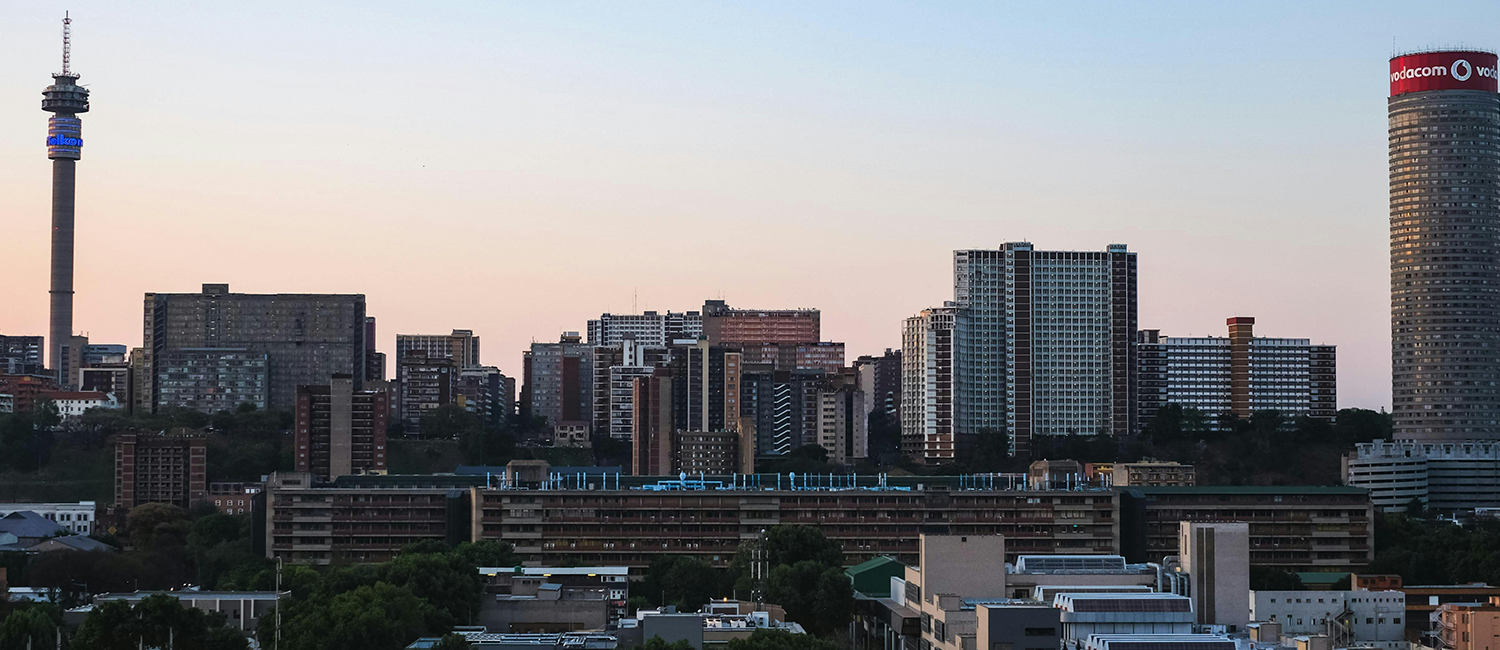RESIDENTS of Joburg’s eastern suburbs are in agreement: there has been a substantial improvement in the standard of roads, security and public transport following the 2010 football World Cup.
This is according to a two-year study of the legacy of the tournament conducted by Wits University. The results of the research were presented at a two-day Sport and the City conference hosted by Wits in conjunction with the Johannesburg Development Agency and the Gauteng City Region Observatory.
Aly Karam, an associate professor at Wits School of Architecture and Planning, explained the impetus behind the survey: “We needed to understand what really happened to South Africans after this mega event called the World Cup had passed … What legacy it left behind; and if indeed it had an impact on the economic and social development of the community.”
The university initiated, conceptualised and undertook the study , to be done in the Coca-Cola Park precinct, which includes the suburbs of Doornfontein, New Doornfontein, Bertrams, Bezuidenhout Valley, Troyeville, Judith’s Paarl and Lorentzville. Substantial investment was made into upgrading these areas for the championship by the City and its partners.
It is also the end point of the first Rea Vaya trunk route, connecting Soweto with eastern Joburg, and its stadium, Coca-Cola Park, was a World Cup venue.
The conference was attended by researchers, academics and public servants from South Africa, Zimbabwe and Brazil, the 2014 World Cup hosts, and representatives from other countries. Also in attendance was Danny Jordan, who was the chief executive of the 2010 FIFA World Cup Local Organising Committee, and Sharon Lewis, the JDA’s executive manager of planning and strategy.
Legacy
Ambitious targets were set ahead of the championship. Improving infrastructure was one of the City’s targets, while ordinary people aimed to advance economically, socially and otherwise. Now, the Wits study has revealed the varying perceptions of residents about the 2010 legacy, both detrimental and beneficial.
In 2010, 357 residents of Greater Ellis Park were interviewed; of the respondents, 60 percent were black South Africans, 63 percent were under the age of 40, 35 percent lived in free-standing units, 35 percent in flats and 17 percent in backyard rooms. In total, 75 percent rented and 17 percent owned.
Then, in 2011, 293 respondents were interviewed. Of these, 54 percent were black, 76 percent were under the age of 40, 52 percent were single and 32 percent were married, 42 percent lived in flats and 19 percent in backyard rooms, 73 percent rented and 10 percent owned properties.
Overall, people felt that there had been a substantial improvement in the standard of roads, security and public transport services after the World Cup. Many residents felt that public transport had improved. The study found that the Bus Rapid Transit system, Rea Vaya, was a substantial state investment, and seemed to be maintaining its positive legacy.
It recorded an increasing number of people who believed that public transport had improved. In 2010, 22,1 percent said it was much better; in 2011, that figure was 20,5 percent. “Around 68 percent of those saying that public transport is much better or better have an income lower than R3 000 a month,” the study found.
Security
When asked about change in security immediately after the World Cup, in 2010, 6,2 percent said it was much better. In 2011, the figure jumped to 15,7 percent. About police presence, in 2010, 17,9 percent of respondents said police presence was much better; in 2011, that number increased to 19,1 percent. In 2010, only 17,1 percent said the roads were much better; in 2011, 18,4 percent said the roads were much better.
The study concluded that many residents thought Greater Ellis Park was a better place to live. It revealed that about two-thirds of the poor benefited directly from the improvements in public transport, through the addition of Rea Vaya. However, they felt they did not benefit from public expenditure on the stadiums, which was probably the highest investment.
Some benefits proved difficult to perceive, such as an improvement in sewerage systems and electricity as they were not bad, the study found. It also stated, however, that legacy could not be determined in a short period of a year after the event. It was still to be seen in 2012 and may be in five or even ten years’ time.
Respondents also had some advice for Brazil: some said they should start looking at perceptions early, while others said they should provide good accommodation, and that they should sell cheaper tickets.
Karam said most of the work for the study was done by students who took to the streets and went into people’s homes to find out how people perceived the World Cup.
Investment
The study recorded that the original plans for the area were rather ambitious. In 2006, the City of Joburg aimed to spend a whopping R2-billion on upgrades. However, the plans were modified to a more modest R423-million for the entire precinct, the City reported in 2011.
Private and public funds were used for the renovations and upgrades, with contributing organisations including the JDA, the Affordable Housing Company (Afhco) and the City of Johannesburg.
Extensions to Coca-Cola Park, the stadium, were completed by the end of 2008. Other upgrades around the precinct included public art, street lighting, electrical generators and water supply. The Ellis Park Swimming Pool next to the stadium was also revamped.
Orange Cruyff Centre
Conference attendees also visited some of the 2010 legacy projects, including the Orange Cruyff Centre in Hillbrow, located at the BG Alexandra building. The football centre was built with money donated by the Netherlands football team. It is managed by the social housing company, Madulammoho.
The space, which used to be filled with illegally dumped litter, has become a centre of excellence where future football players are developed. The medium-sized soccer pitch is fitted with artificial lawn on its side and the roof it is covered with a net.
This model is popular for training young footballers in Netherlands and it has proven to be a success. It caters for more than 80 children daily between the ages five and 15. Youngsters are trained through formal football structures and are mentored by a professional coach. Different age groups are allocated different training times.
John “Bull” Sibeko, the former Witbank Aces player, is the man in charge of training – and it’s a job he treasures.
From Hillbrow, the delegates headed to south to Batsogile High School, where they met members of Grass Root Soccer, a global HIV/Aids awareness programme. It was rolled out in Soweto schools in 2007.
Local youth were trained as life coaches under the programme. Their duties include regular visits to schools to teach children about HIV and general life skills. The conference group also went on a drive around FNB Stadium in Nasrec – called Soccer City during the World Cup – and Coca-Cola Park, which was previously known as Ellis Park Stadium.

